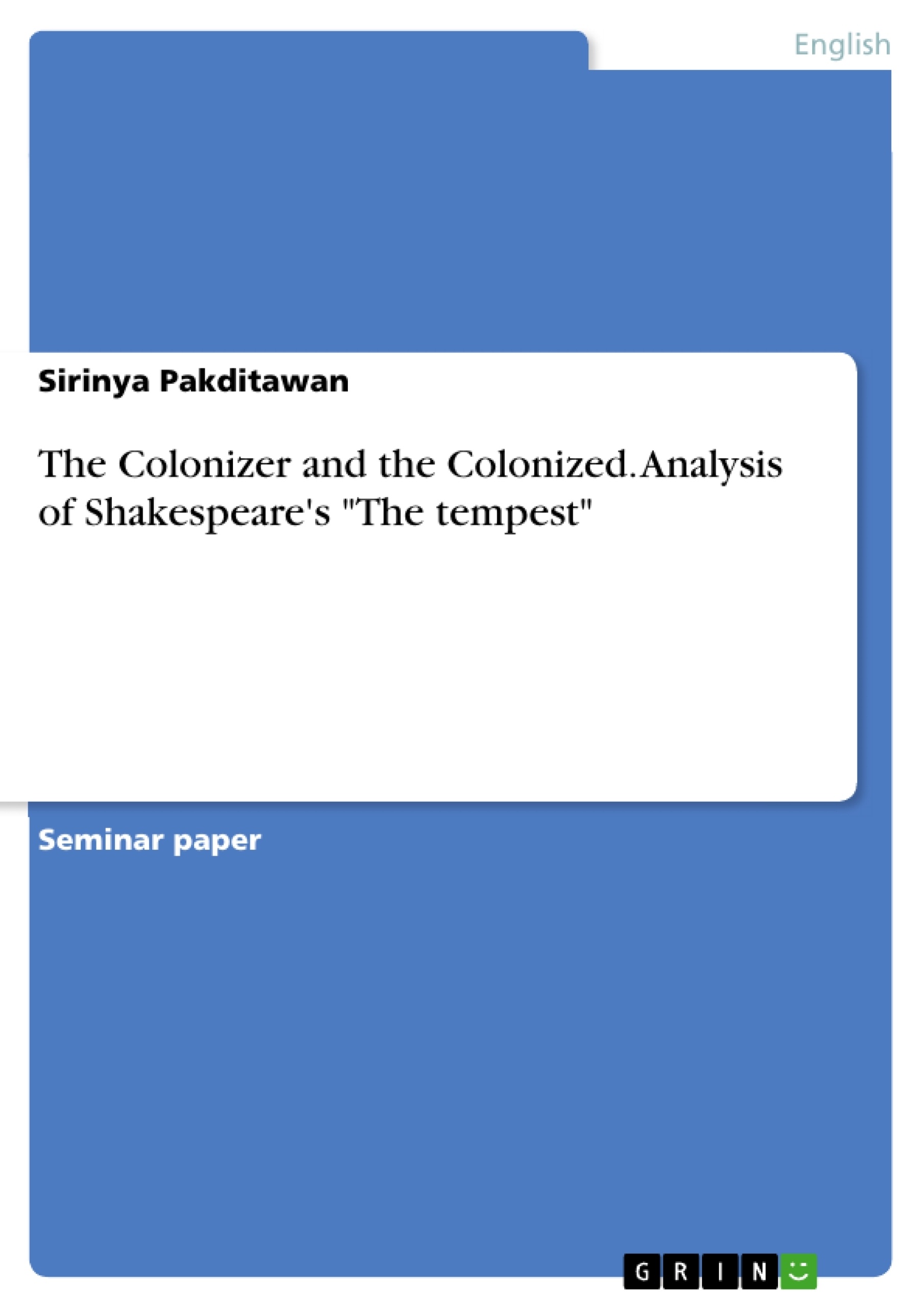It is a fact that Shakespeare’s plays are an essential part of the Elizabethan period and hence deal with topics characteristic of this time. This is also true of The Tempest, which was probably written in 1610 – 1611, for it is concerned with the theme of colonization and exploration of the New World, the newly discovered Americas. The Elizabethan period is known as the Age of Exploration.
Thus, The Tempest not only deals with the effects of colonization and civilization on the natives but some critics also tend to read this play as a metaphor of colonialism, since every character is concerned with how he would govern the island if he was the ruler. However, The Tempest can be regarded as a play whose plot is completely original and also very personal. The critic Richard Dutton even claims that there is a “theory that Prospero in The Tempest represents Shakespeare himself”.
Critics have taken this play very seriously and have pointed out its complexity. Hence, Stanley Wells says that “The Tempest (…) is a supremely poetic drama (…) because it speaks (…) on many levels, universally relevant (…) and (…) universally effective”. Why is The Tempest regarded as so original and unique? Well, one might find an answer to this question by taking a closer look at its background, its sources, its structure and at its main characters.
For this reason, I will deal with the sources of The Tempest in more detail in the following chapter. In a next step, the dramatic structure of the play will be analyzed. Since this play is mainly about colonizers and the colonized, it is also of vital importance to analyze the prominent character Caliban and the European characters’ attitude to him, in this context. It will be argued that Caliban becomes a victim of colonization.
Table of Contents
- Introduction
- Sources
- Dramatic Structure
- The Colonizer and the Colonized
- Caliban, the Victim of Colonization
- The European Characters' Attitude to Caliban
- Summary
Objectives and Key Themes
This preview aims to offer a comprehensive overview of William Shakespeare's play, The Tempest, highlighting its sources, dramatic structure, and exploration of the relationship between colonizers and the colonized. It seeks to understand how the play reflects the Elizabethan era's fascination with exploration and colonialism, and how these themes are interwoven with the play's unique plot and character development.
- Exploration of the Impact of Colonization
- The Power Dynamics between Colonizers and Colonized
- The Role of Language in Shaping Identity and Power
- The Significance of Sources and Influences
- The Play's Unique Dramatic Structure and Form
Chapter Summaries
The introduction of the play discusses the context of The Tempest, placing it within the Elizabethan era's focus on exploration and colonialism. It emphasizes how the play reflects the anxieties and complexities of this era, using the island setting as a metaphor for the newly discovered world. The text further explores the play's originality and its potential connection to Shakespeare's personal experiences.
Chapter 2 delves into the diverse sources that inspired The Tempest. It examines how Shakespeare drew on contemporary accounts of exploration, shipwrecks, and European encounters with native populations, including the voyage to Jamestown and the Bermudas shipwreck. The chapter also explores the influence of classical works such as Erasmus's Naufragium and Montaigne's essay "Of Cannibals" on the play's themes and characterization.
Chapter 3 focuses on the dramatic structure of the play, highlighting its adherence to the three unities of time, place, and action. It explains how this neoclassical structure enhances the play's coherence and plausibility, allowing the audience to follow the action more easily. The chapter also discusses how the play's setting on a single island within a relatively short period strengthens its thematic focus.
Keywords
This preview of The Tempest examines key themes like colonization, power dynamics, language, source material, and dramatic structure. It focuses on the relationship between colonizers and the colonized, using the character of Caliban and the European characters' perspectives on him as a lens to understand the complexities of this relationship. The text also delves into the play's sources, including accounts of exploration, shipwrecks, and philosophical works, and analyzes its unique dramatic structure, which adheres to the three unities. Key concepts include cultural relativism, colonialism, and the power of language.
- Quote paper
- Dr. Sirinya Pakditawan (Author), 2006, The Colonizer and the Colonized. Analysis of Shakespeare's "The tempest", Munich, GRIN Verlag, https://www.grin.com/document/284062




